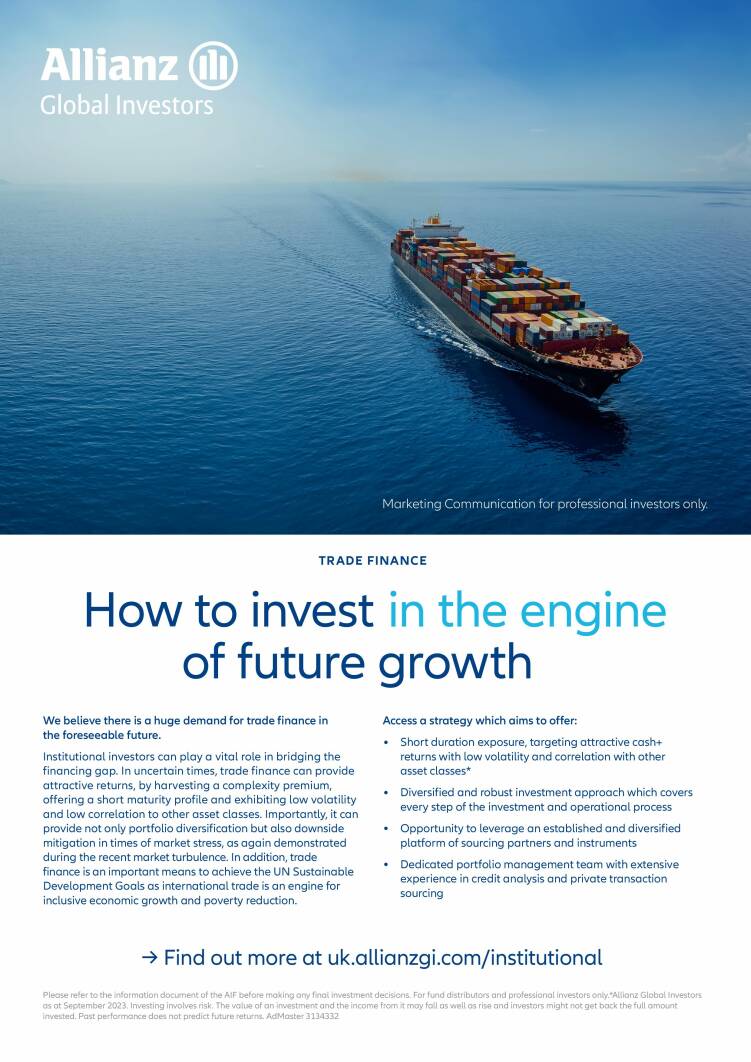Click to read
CCLA: Crafted
with care

Click to read
The roundtable
report

Click to read
Allianz: Trade finance
as a cash
management tool

David Dickinson, investment fund manager, London Borough of Barking and Dagenham
Peter Findlay, founder, Room151
Jason Holland, editor, Room151
Matt Hopson, deputy director of finance – corporate, London Borough of Islington
Joe Jepson, director, UK institutional, Allianz Global Investors
Sidhant Mehta, fund manager (cash), CCLA Investment Management
David Newman, managing director, fixed income, Allianz Global Investors
Nemashe Sivayogan, head of treasury & pensions, London Borough of Merton
Bola Tobun, treasury & pensions manager, London Borough of Harrow
Kelly Watson, head of local government relationships, CCLA Investment Management
Luke Webster, chief investment officer, Greater London Authority
Cognisant of the current macro-economic outlook, roundtable participants from local authorities who manage cash for both their LGPS pension funds and their authority’s treasury capital, were joined by two investment management sponsors, CCLA and Allianz Global Investors, to discuss the cash management challenges and opportunities of the day.
Investments have had to change to adapt to council and pension cashflow demands, the asset mix has shifted, while the sharp rise of interest rates has left many wondering how to make the most of cash investments and whether to explore other near-cash investment solutions that are currently attracting inflows.
The roundtable featured discussion on the potential links and similarities between pensions and treasury, and opportunities for treasury and pensions teams to explore greater efficiencies across the two functions. The roundtable also explored how peers wearing these related but different hats see their requirements developing in the coming years.

Treasury & Pensions
Liquidity Network Roundtable


“Are there investments you’ve made that are lower yielding, which you can start to eke out even small amounts and push them into either money market funds or other funds of your choice which are higher yield?”
Sidhant Mehta, fund manager (cash), CCLA Investment Management
Luke Webster, chief investment officer, Greater London Authority: This roundtable will look at how investments are changing to the cash flow demands of both pension funds and councils’ main operations, and the potential links and similarities between pensions and treasury, but let’s start with Sidhant.
Sidhant Mehta, fund manager (cash), CCLA Investment Management: I’m going to talk about the UK macro economy, interest rates, and, most importantly, preparing yourself for the current changing environment from a cash perspective. UK rates are now 5.25% and inflation is more than three times higher than the Bank of England target, and core inflation is remaining sticky at around 7%, and it’s worth understanding the dynamic on this.
A couple of years ago, the main driver for headline inflation was goods inflation, with international influences like supply chains, energy, fuel prices and currency fluctuations all having an impact. Things have begun to mean-revert to a degree: supply chains have eased, energy prices are lower, and currency fluctuations have typically normalised.
Goods inflation has fallen sharply and was the main driver behind the drop in Headline inflation as well.. Goods inflation is still high but is no longer the key issue. The main issue now is around services. Services inflation has more domestic influences, which have a much deeper connection and impact on core inflation.
Economists are citing labour shortages, skills shortages and wage inflation among other factors. Rates have tightened at a much faster pace since the second half of last year, in an attempt by the Bank of England to curb price levels over these elements.
In our view, we are in the final phase of a tightening cycle, but nobody knows when rates will drop – it’s going to be data dependent.
Given our view is that rates will drop in the near future, you need to protect your income. You can’t eliminate interest rate risk entirely, but that shouldn’t stop you from at least delaying the drop in your income as much as possible and finding as much interest in this final phase as you can. There’s three ways to do this. The first is around the size of the investment, and it’s worth treasury managers taking a deeper look at their investments. Are some lower yielding, where you can start to eke out even small amounts and push them into either money market funds or other funds of your choice which are higher yield? It doesn’t have to be for long periods of time and can just be for a few days. For instance, with our public sector deposit fund, most of our clients during the first half of the month keep adding investments into a fund. They raise up the interest and in the second half they start to spend it.
The second element you can look at is duration. You can eke out an extra day, an extra two days of yield by putting some money in on a Friday and you get three days’ worth of interest on Monday. If you put this in perspective, for our public sector deposit funds, we’re currently yielding 5.16%. If you kept £1m of that in there for one extra day, that starts to generate you £140. If you do that every month that’s getting you closer to £2,000 annual income per year from just eking out one day.
The final point is around interest. You can also increase your income at the margin with yields and interest. We have clients that like to move their money to the highest paying fund every single day. That can generate a little extra income.

But if your goal is to delay the drop in your income there are better ways of doing this. Look at funds and get an idea of the holdings they have, especially as they get longer – six months plus. Those yields are going to help the fund later on when interest rates drop.
Funds with higher weighted average maturity (WAM) are looking to take advantage and capture that higher rate duration now. In our public sector fund we have one of the highest WAMs in the selling money market at the moment. Some of our longer dated holdings are yielding between 5.8% and 6.6%. There is a delay function built in so that whenever interest rates drop we can keep paying higher rates to our clients who can still earn that extra bit of income.
David Newman, managing director, fixed income, Allianz Global Investors
“Trade finance keeps going while there may be financial disruption. The credit risk is a lot lower than you think.”
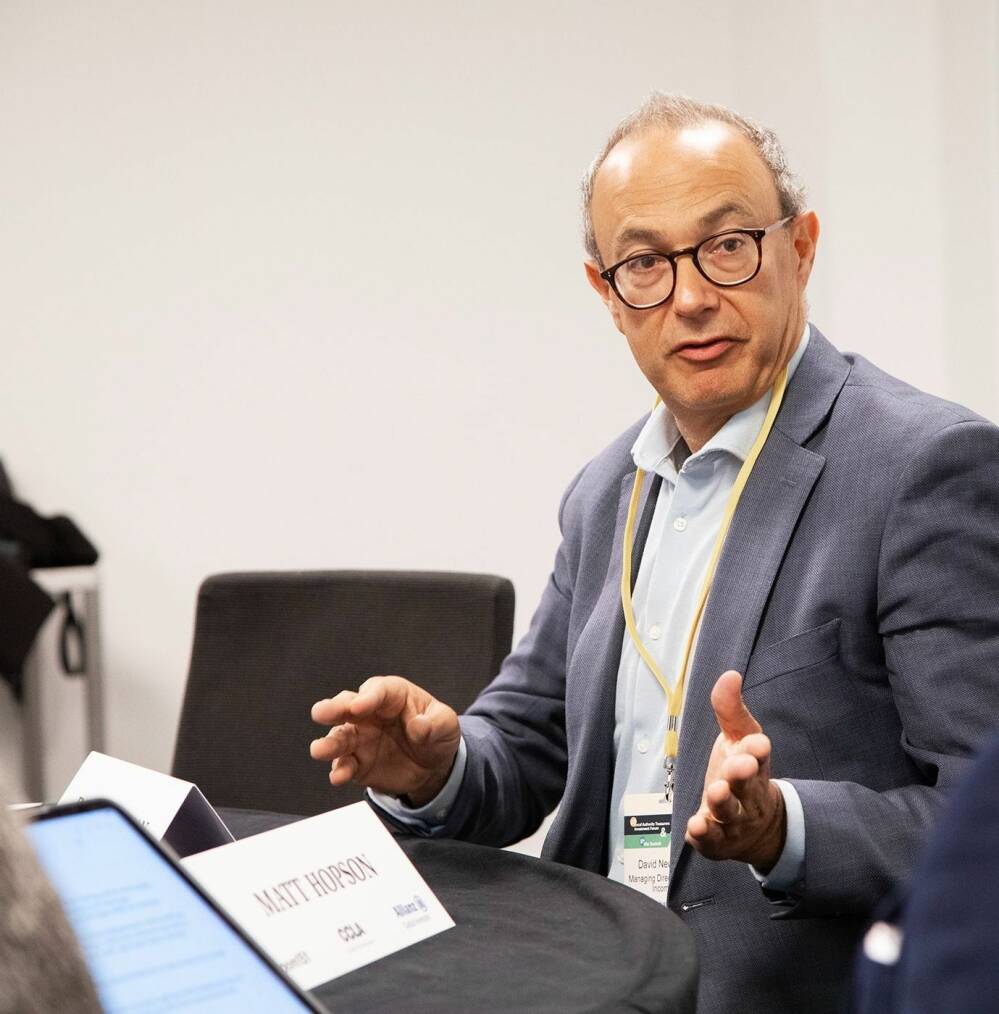
Luke Webster: David, can you give a bit of perspective about how asset mixes might be changing in the pensions world?
David Newman, managing director, fixed income, Allianz Global Investors: I look after multi asset credit funds, high yield corporates, and also trade finance. On duration, if you look at the credit curve you get far more yield for short duration than going longer duration. Capturing short duration yield makes sense rather than going longer duration.
People forget that when you go longer duration, you think you’re taking an interest rate risk, but you’re also taking a lot of credit risk. Right now, there’s a lot of uncertainty and mixed data.
Within the pensions world, the cash allocation is liquid and it wants daily liquidity. But do you need daily liquidity on everything? What we have seen with both pension funds and insurance companies in their treasury bucket is needing liquidity on 70-80% of their cash allocation yet keeping everything in money markets. That makes sense, but you can eke out yields in the same way you would in extending duration by taking on a little illiquidity.
Trade finance is one product that can serve local authorities, more on the pension rather than treasury side. The duration is about 70 days; you’re not taking any of that longer term credit risk or interest rate risk. The pickup is very attractive. We’re running cash plus about 180-190 basis points, giving you double B high yield spreads for 70-day maturity. Because it’s a private markets business, the correlations are low with regard to public markets.
We see that people are beginning to introduce the final 10-15% of their cash ladder into trade finance. You keep very similar duration to what you have. You’re eking out 180 basis points, which is a lot. The liquidity of the fund is monthly, so if you are in a pool or going larger, you can create a separate account just for yourself. Effectively after three months, you should be able to get repaid 100%. If you’re in a fund, it’s slightly lower than that depending on redemption rules. I think that’s an interesting way to complement what you’re doing in money markets.
Luke Webster: In the treasury context, what we’re trying to do is preserve capital in the first instance. We are now in quite a happy place in that respect. However, we have presided over a couple of years of colossal value erosion where at some points there’s been a 10% spread between what we’re achieving in our cash and what inflation is doing. The spending power of the reserves that we’ve been managing is substantially reduced. There’s quite a lot of catching up to do with support service delivery. So, more a question for the public sector delegates, has your council been interested in any changes to your investment strategy to potentially capture some opportunities to make good those losses of the past or have things remaining fairly unchanged?
Nemashe Sivayogan, head of treasury & pensions, London Borough of Merton: We always keep enough cash for any needs. We have mainly depended on the money markets for a long time even though they were not earning major interest. Now we are starting to look at different instruments. With security being the most important thing, these are most likely term deposits and we had some extra cash which for the first time we invested in bonds. The issue we have is that service inflation is high, even though cash flow is ok, and we can see there’s an increase on all the contract costs. The cashflow is going to increase.
Saying that, we are seeing some good interest rate income when we try to utilise extra days, whether it is in the money markets or fixed-term deposits.
In terms of the pension fund cash flow, we have a mature fund, so we pay more out in benefits than we receive in contributions.

“We’re trying to do valuation assumptions on the return that we’re getting right now and keeping it there, whilst that is being drawn down, as it reduces that volatility to future risk events.”
Matt Hopson, deputy director of finance – corporate,
London Borough of Islington
We’re looking at the investments to give us additional income. As part of that we have invested in a buy and maintain bond fund so it will give us some additional income but is not going to completely eliminate the net deficit.
Matt Hopson, deputy director of finance – corporate, London Borough of Islington: With the pension fund, for the first time in a very long time we haven’t had that significant cash drag. Go back to 2017, and generally you wouldn’t maintain a cash allocation at all whereas now you can get some good risk adjusted returns over the next 12 months.
What we’ve done at Islington, which would have been unheard of maybe four years ago, is we’ve got a number of restructures required in our investment portfolio. We have private markets allocations building up and we have some asset sales that are needed to fund these various things that are going on. All the liquid securities that were being used to fund illiquid have just been sold and placed into cash instruments which deliver a perfectly reasonable level of return. We’re trying to do valuation assumptions on the return that we’re getting right now and keeping it there, whilst that is being drawn down, as it reduces that volatility to future risk events.
Luke Webster: What sort of cash instruments are you using?
Matt Hopson: Money market funds with good liquidity. We’re not trying to do anything clever. It’s quite a significant amount for us to hold, close to £70m, but it’s a relatively small fund.
On the treasury side, Islington’s cash has been significantly eroded over the years. We’re well under £100m in terms of treasury investments.
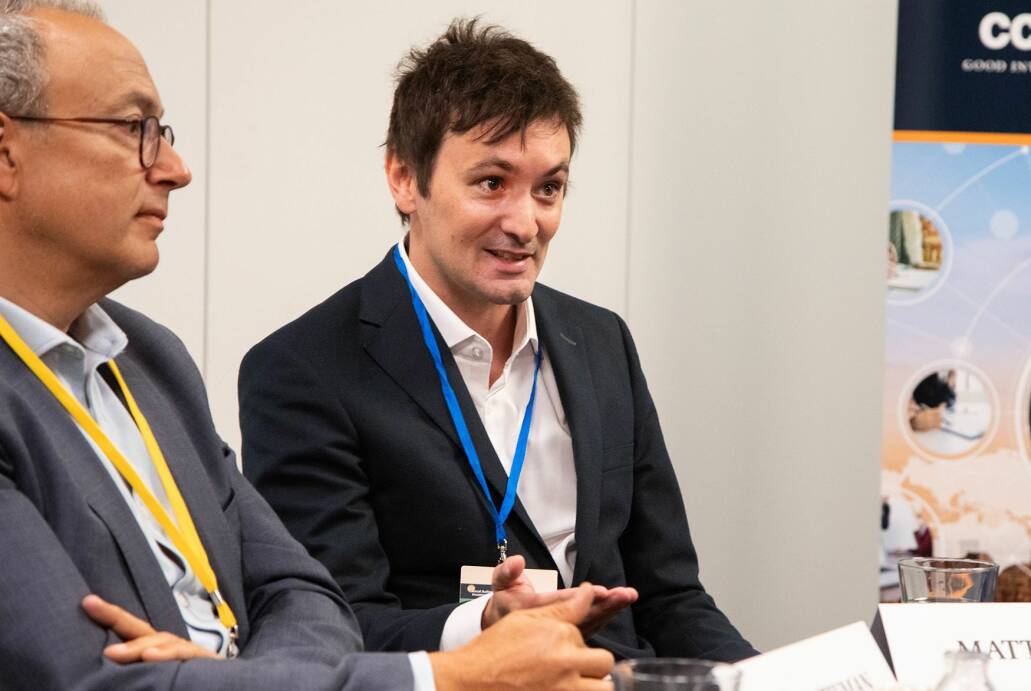
Bola Tobun, treasury & pensions manager, London Borough of Harrow
“It’s time to review the strategy and see how we can have longer term. I usually put 20-30% of the investment portfolio longer term depending on capital expenditure of the council.”

What we’ve tended to do is take a surprising amount of duration. For a fund with relatively small cash for the size of the authority, we have taken more duration on a 6-18 month basis. You’re seeing incredible yields with secure partners, of over 6%. Maximising that is very important to us with such a small amount of cash, but we are in a good position where we haven't changed our cash receivable budgets significantly.
We’re not under pressure to gain extra returns but when we’re in these particularly challenging times and budgets, every bit helps. We have taken a bit of that liquidity risk, but not without careful consideration.
Luke Webster: Is that still in bank deposits or are you looking at other means?
Matt Hopson: Yes, still other local authority / bank deposits. Every week when the next authority has a s114 notice warning out, the question goes round, ‘are we invested in xyz?’. We have been hit with some names in the past but there is no risk to recovery in real terms. We can reassure members and senior officers that everything’s fine.
Bola Tobun, treasury & pensions manager, London Borough of Harrow: For our pension fund, we have a dedicated portfolio to use to fund our illiquid assets. The investment outlook for performance for the year is low. The best option currently seems to be cash, and while we may not do that, we are considering the options of what to do because we’ve got over £70m in that portfolio and over 10% allocation to illiquid assets we need to fund over the next 2-3 years. We don’t want to put it in equity or something else. Hopefully now we can do something better with it.
For the treasury side of things in Harrow, it has been very low risk. It’s time to review the strategy and see how we can have longer term. I usually put 20-30% of the investment portfolio longer term depending on capital expenditure of the council.
Matt Hopson: On short dated bonds, when I was at Westminster Council, we sold down a number of assets to put into a short dated bond fund of 6-12 month duration to fund the liquids, which was a terrible decision in hindsight, because we couldn’t have expected rates to move so quickly.
David Dickinson, investment fund manager, London Borough of Barking and Dagenham
“On the treasury side, we’ve had a lot of cash and we’re just running that down currently. There’s a lot of investments in the council.”

The other thing is that they have about 40% peripheral risk. It can be good but it’s not stable.
Is trade finance any better? Well, it’s diversified and it's different. They’ve all got risks. I think the most important thing is to understand what the embedded risks are. If you’re trying to come up with various short duration strategies, looking at higher rates, you can just dig that little bit deeper and diversify across those risks.
Luke Webster: How have things changed with pensions treasury and investment at Barking and Dagenham?
David Dickinson, investment fund manager, London Borough of Barking and Dagenham: Historically, we’ve tried to steer clear of cash and generally had a short-term borrowing position. But the pension increase has happened this year. We’re beginning to build up a bit of a cash position and it’s quite a good time to do it with interest rates being a bit higher.
On the pension fund side we’ve also not really had reallocation to fixed income and we’ve just done a rotation in the last month, from equities and other alternatives into asset bonds and credit. On the treasury side, we’ve had a lot of cash and we’re just running that down currently. There’s a lot of investments in the council. It’s been lovely to have all that cash and getting 5% or 6% but we’re running down the commitments on the investment side.
We started an investment programme about seven years ago, and we are still finishing off some of those. There isn’t much new investment coming out.
But you end up seeing significant capital losses on a 6-12 month cash like instrument, because rates have moved so quickly. Sometimes chasing that extra yield is a bit dangerous.
David Newman: The whole concept of money market funds being absolutely safe is a bit of a misunderstanding as well. A typical credit money markets fund would have maybe 40% exposure to banks so when a nation’s bank struggles there will be drawdowns.
Kelly Watson, head of local government relationships, CCLA Investment Management
“One thing that we are hearing from clients is that there has definitely been a shift to that more shorter-term cash allocating part of the portfolio.”
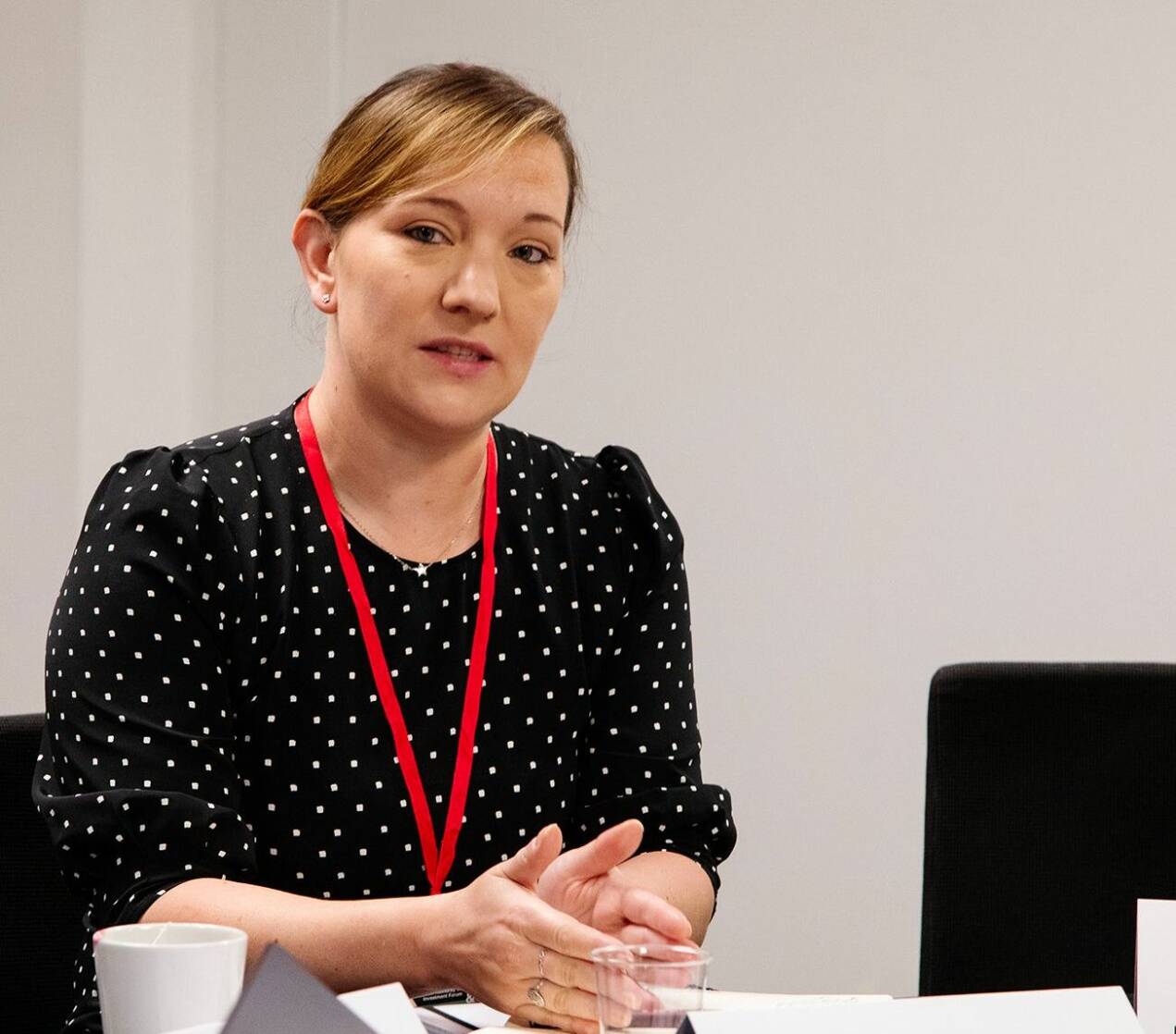
Luke Webster: To those of you involved in looking after local authorities, are you seeing any shifts in client behaviour on either the pensions or treasury side?
Kelly Watson, head of local government relationships, CCLA Investment Management: One thing that we are hearing from clients is that there has been a shift to that more shorter-term cash allocating part of the portfolio. There has been a bit of a shift to fixed term deposits, not necessarily in the overnight markets but shifting out to maybe 3, 6, 9 months. The shift in asset behaviour is in the short end of the market, and a little bit of cash plus.
I think there is a lot of chasing the yield. In that 6-12 month period is where you can get the biggest pickup in yields. After that, the yield curve does shift down a little bit.
There is a search for that additional yield. Now that we’ve got this interest rate environment that we’re in, how long will it remain for? I think people are looking out into the extended short end – not quite the medium term.
Joe Jepson, director, UK institutional, Allianz Global Investors: We’ve seen a lot on the pension side. There’s been a lot of commitments to private markets over the past few years. Frustratingly, in many ways it’s taken quite a long time for these to be drawn down – 2-3 years. It’s a case of ‘where do we put the cash that will be used to draw down the private markets’. For multi asset credit there’s been some frustration in terms of performance. That’s where we've had more conversations and we’ve taken on some clients who are using trade finance as a diversified way of achieving some cash plus return. It’s also just about achieving diversification.
“We’ve taken on some clients who are using trade finance as a diversified way of achieving some cash plus return. It’s also just about achieving diversification.”
Joe Jepson, director, UK institutional, Allianz Global Investors
“We’ve taken on some clients who are using trade finance as a diversified way of achieving some cash plus return. It’s also just about achieving diversification.”
Joe Jepson, director, UK institutional, Allianz Global Investors

Matt Hopson: I’m interested in colleagues’ views on long dated treasury government as an option, a very small part of the portfolio. Westminster did make a five-year gilt purchase in 2014. That was yielding around 2.5% and that was a massive amount of return for what you could get at the time and now you’re seeing significant returns for that compared to what you were getting five years ago. Has anybody looked into this?
Nemashe Sivayogan: We have invested in this. There is extra one-off cash and we want to secure that for a long period. We could trade it in the short term and get something like 5.5% or 6%, but we don’t know for how long that will be. We get something stable for x number of years and we will get the bond yield coming for the annual budget. This is not the normal operating cash because it’s an additional cash, so we can lock it for a long and stable return. This was only invested a couple of months ago so I haven’t come to the reporting part yet. But we will hold it till maturity – that is the intention.
Luke Webster: Something we want to do as a sector is to get people used to discussions on maturity. We have a volatility value at risk limit for the fund; it’s very small at 2% so it’s seriously low risk in aggregate but the point is that is inoculates people to that discussion. They’re used to seeing small market to market movements and we can always come back with the narrative that we’re holding to maturity, and so there isn’t going to be a real loss. It’s very small and we hold a reserve against it as well so that there’s no impact on the general fund. I think getting people used to that discussion is key to unlocking more interesting opportunities.
Kelly Watson: I completely agree with you that education is needed.

Luke Webster: Coming back to the question of whether now is a good time to do that, I think if you’re happy with the credit, and you’re convinced you can hold it to maturity and you like the level of income, and you want the budgetary certainty, why not?
I think now is a very interesting time for thinking about strategy because with the shape of the yield curve at the moment, you’re quite well rewarded for parking things in the medium term, which gives you space to think.
On a market to market basis with conventional government or long dated corporate bonds there probably is quite a lot of risk going further out because you can see the yield curve – whatever happens, whether it goes up or down – it will correct at some point to a normal shape. You’re going to experience more losses at the longer end, if it goes the wrong way.
Where we’re taking duration now it’s more in the private credit space, and I think illiquidity premium is coming back as a kind of reward. I probably would shy away from doing gilts right now, but you might want to revisit that in a few months.
Peter Findlay, Founder, Room151: Are these fundamentally distinct conversations? You manage the treasury, you manage the pension, and there’s not a lot in common with the two. Or is there an advantage to being across both pots of capital? Can you do things across the two?
Luke Webster: I think we miss a trick in local government in this regard. This isn’t a corporate trust structure. The pension fund is just a revenue reserve of the authority that has special investment powers applied to it which are broader than the authority’s general investment powers. We could think about things in a more integrated fashion and it always strikes me how unintegrated the approach is generally.
Bola Tobun: The experience and the knowledge is useful. You can make use of the experience and knowledge you are getting from your advisor from treasury to challenge the investment consultant from pensions, and vice versa. Whereas if you don’t manage both pensions and treasury cash, the capital team will just be dependent on the treasury advisor, and whatever it is they are saying.
Meanwhile, because you are exposed to more investment knowledge through the pensions, it will give you the confidence to challenge some of the things investment consultants say to you for your pensions because you are in that market as well.
“We as officers use the knowledge that we can to influence things but so far we haven't considered whether we can amalgamate two funds or make one decision for both pots of money.”
Nemashe Sivayogan, head of treasury & pensions, London Borough of Merton
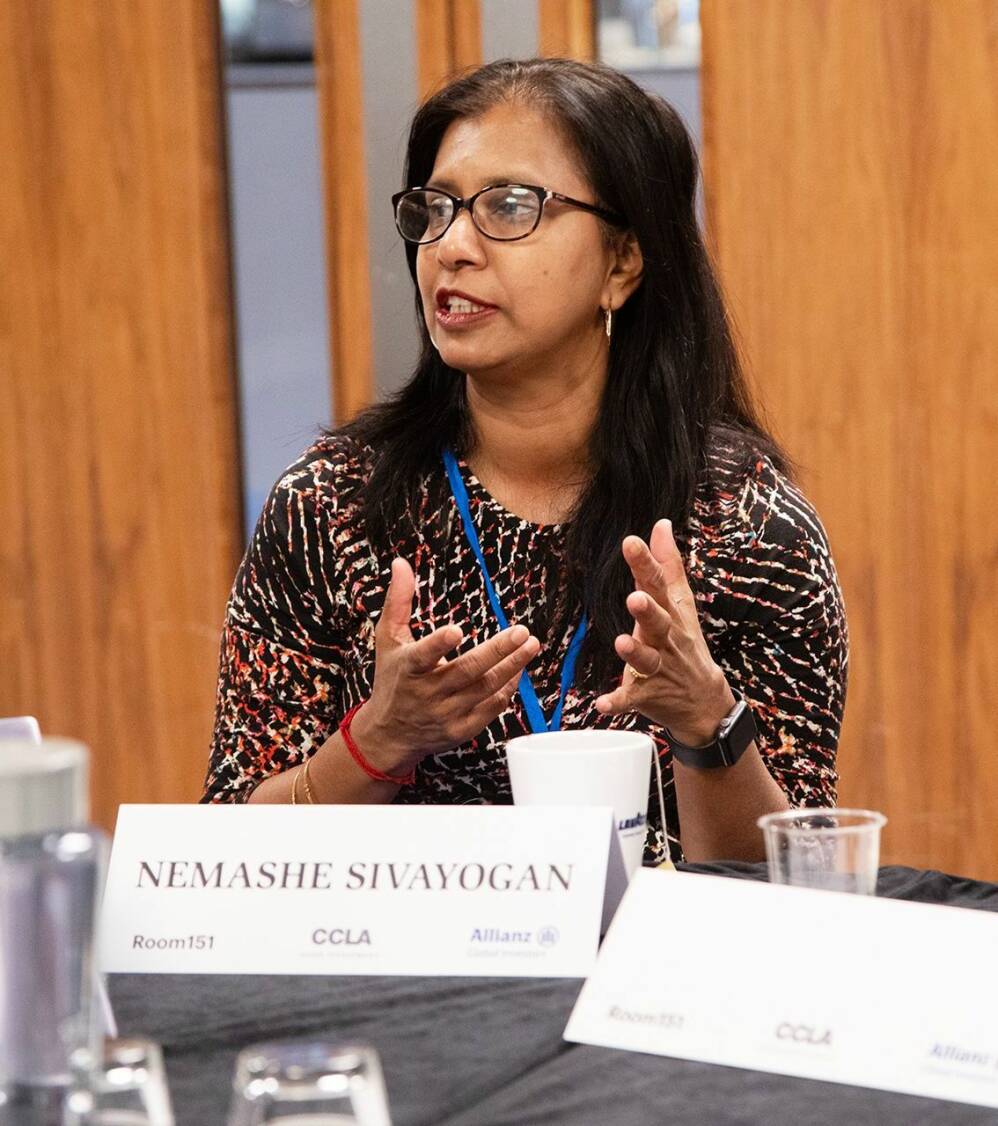
Matt Hopson: At Westminster we had treasury and pensions investments together in the investment strategy, but there’s no overlap because the investments that you could make in treasury were so inferior to the options you had in pensions at the time. Although you were always looking with the same lens, there’s not much overlap. That’s not necessarily the same case now. There’s the same skills, using the same consultants to manage all economies of scale, the same property managers and same insurance process, one investment fund with the relative shares accordingly, so I definitely could see more scope for this now than there has ever been in my career.
David Dickinson: There’s that knowledge and the ability to discuss some of the council’s investments with the fund managers, which is very useful. They can provide a different view on things in the market.
Nemashe Sivayogan: My fund is completely different. The decision making is separate for the pension fund, pension fund committee and the general fund and, after them, the treasury side and capital. We as officers use the knowledge that we can to influence things but so far we haven't considered whether we can amalgamate two funds or make one decision for both pots of money.
Luke Webster, chief investment officer, Greater London Authority
There’s in some way a kind of adversarial relationship between the fund and its sponsor. That’s just not the case in local authority. The stakeholder in local authority is the taxpayer. They’re the people who are bearing all the risk and it’s the same risk if things go wrong in treasury or if things go wrong in the pension fund. It’s not the pensioners who lose out, it’s the council taxpayers.
“The stakeholder in local authority is the taxpayer. They’re the people who are bearing all the risk and it’s the same risk if things go wrong in treasury or if things go wrong in the pension fund.”

Luke Webster: I think that there’s a risk of taking that separation to extremes and operating silos of thinking, and it’s not clear what that achieves, and this can be a bit of an own goal. I think a lot of the issues arise from the fact that pension funds receive advice from people in the main who advise corporate pension funds where the structure is very different. That is a legally separate trust.

Trade finance simplistically is a short-term line of credit from a third-party financier that helps companies fund the buying and selling of goods. The primary risk is credit, although there are some specific trade related risks that also need to be understood.
Trade finance covers a wide range of risk profiles with target returns over cash ranging from +50bp to +1000bp. Given the low risk tolerance of treasury managers, return targets below +200bp are likely to be the most appropriate.
A well-structured trade finance fund should be broadly diversified to mitigate credit, sector, and geographical risks. Typically, one would see an average maturity of assets between 60 and 90 days.
Trade finance’s ultra-short-term maturities allow for any underperforming positions to be swiftly replaced at maturity with more promising investments. Unlike in bond markets, those assets do not have to be sold at a lower rate if the market value has dropped. Instead, they expire at par – or face value – meaning the portfolio rebalancing does not lead to trading losses.
This broad diversification and short duration should create a low volatility investment.
The growing institutional trade finance asset class provides an interesting opportunity for treasurers seeking a medium-term cash position within a liquidity ladder that could offer superior returns to money market funds, reports Allianz Global Investors
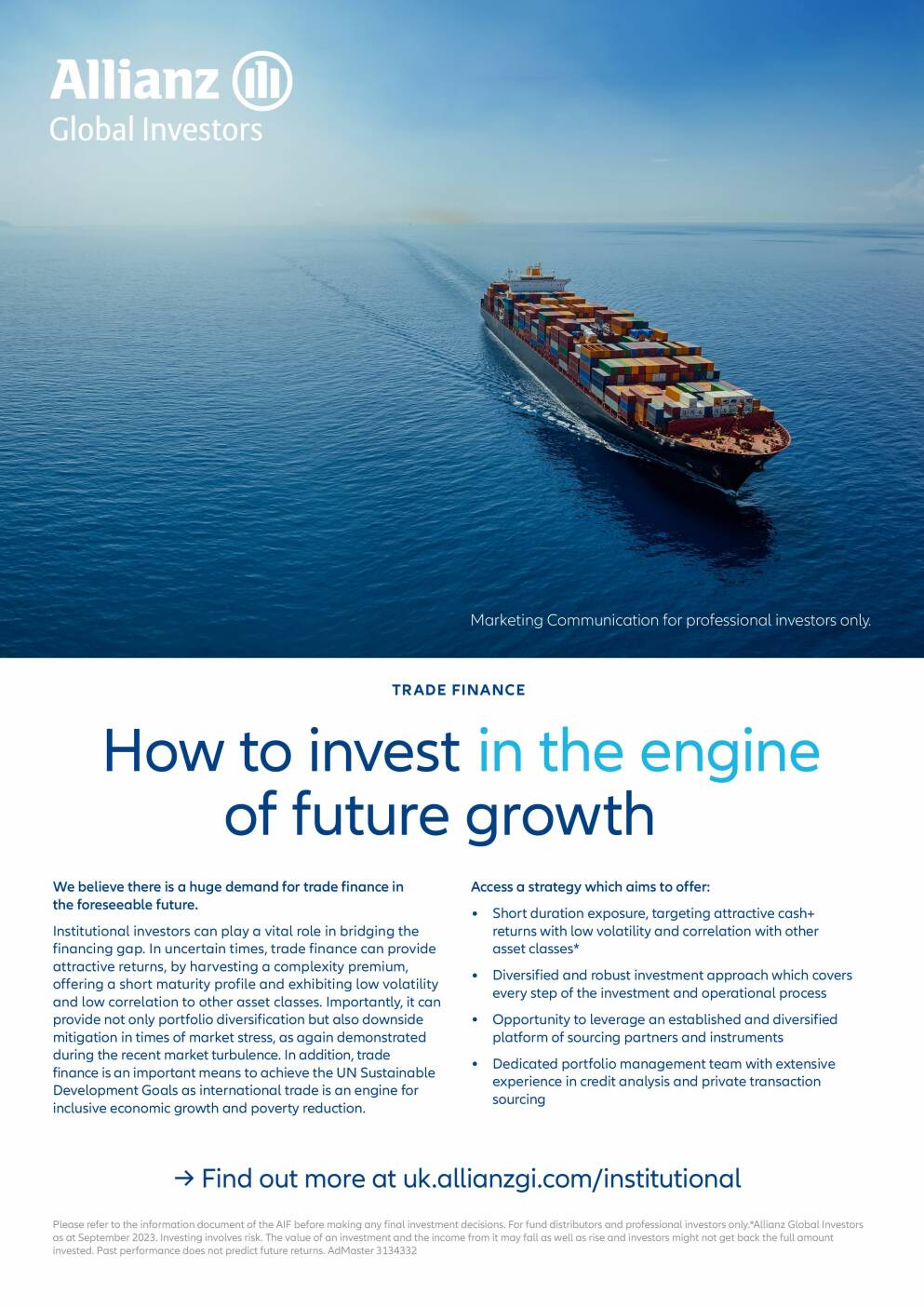
As trade finance instruments are private and have a complexity premium, they could provide a greater return than seen in the public markets for the same credit with a similar tenor. This premium also contributes to reduced correlations with credit markets.
Less exposure to risks
Money market funds are the natural home for cash investments. However, to get any returns, typically these funds take on risks that may not be evident. Many credit focused funds have high exposure to the banking sector or peripheral Europe that can provide greater than expected volatility. A trade finance fund reflects the dynamics of global trade and is far less exposed to these risks.
Furthermore, with a global market to chose from, credit exposures can be altered reasonably quickly.
Superior returns, and low market correlations do have a cost; namely liquidity. Trade finance funds typically have weekly or monthly redemptions with some limits on absolute amounts returned.
However, for treasury portfolios where cash is not needed daily, the boosting of an efficient frontier can be compelling. For example, trade finance is a useful tool for meeting capital calls for private markets or meeting known future payouts for salaries, building contracts, etc.
While funds do have redemption hurdles, if advanced notice is given of liquidity needs, a fund manager should be able to create the required liquidity due to the short-term nature of investments. Larger investors can also have a segregated account where liquidity is usually higher than that offered in fund format.

[i] Using Fitch Ratings methodology. Ratings are subject to change.
For local authority treasury and pension managers, consistent income and sustainability matter more than ever before. In a world where costs are rising, banks are failing, and ESG is taking front-and-centre of many conversations, it is important to work with an asset manager that understands these challenges.
CCLA’s Public Sector Deposit Fund (PSDF), is a [i]AAAmmf UK qualifying money market fund that has been crafted to meet, in particular, the unique needs and expectations of public sector organisations. From embedding the security, liquidity, and yield (SLY) framework as a cornerstone in our strategy, to operating with a dedicated in-house sustainability team that vets and continuously monitors our counterparty’s ESG risks, to offering transparency to our clients.
The PSDF has been designed for the sector. It operates as a UK-domiciled, low volatility net asset value (LVNAV) money market fund and maintains strict accordance with the UK money market fund regulations.
CCLA’s Kelly Watson shows how the investment company’s Public Sector Deposit Fund can meet the unique needs and expectations of public sector organisations

• Ready to explore the benefits of the Public Sector Deposit Fund? Please contact Kelly Watson, head of local government relationships at CCLA, on kelly.watson@ccla.co.uk or 0207 489 6105.
The fund benefits from the guidance and oversight of a diverse independent advisory board consisting of experienced councillors, members of local government associations, local government advisors, and investment professionals. All are focused on providing valuable insights, enhancing governance, and most importantly, making sure the fund stays rooted to low-risk public sector needs.
At CCLA, we understand that the demands on councils are changing, and with that so are their cashflow needs. That’s why the PSDF offers instant access in the form of daily dealing, giving our clients the flexibility and liquidity to manage their individual circumstances.
As at 12 October 2023, the PSDF was yielding 5.33% AEY. For the latest yields, visit ccla.co.uk.
Tap to jump to the feature
Crafted with care

Trade finance as a cash management tool
Read the roundtable report


Cognisant of the current macro-economic outlook, roundtable participants from local authorities who manage cash for both their LGPS pension funds and their authority’s treasury capital, were joined by two investment management sponsors, CCLA and Allianz Global Investors, to discuss the cash management challenges and opportunities of the day.
Investments have had to change to adapt to council and pension cashflow demands, the asset mix has shifted, while the sharp rise of interest rates has left many wondering how to make the most of cash investments and whether to explore other near-cash investment solutions that are currently attracting inflows.
The roundtable featured discussion on the potential links and similarities between pensions and treasury, and opportunities for treasury and pensions teams to explore greater efficiencies across the two functions. The roundtable also explored how peers wearing these related but different hats see their requirements developing in the coming years.
David Dickinson, investment fund manager, London Borough of Barking and Dagenham
Peter Findlay, founder, Room151
Jason Holland, editor, Room151
Matt Hopson, deputy director of finance – corporate, London Borough of Islington
Joe Jepson, director, UK institutional, Allianz Global Investors
Sidhant Mehta, fund manager (cash), CCLA Investment Management
David Newman, managing director, fixed income, Allianz Global Investors
Nemashe Sivayogan, head of treasury & pensions, London Borough of Merton
Bola Tobun, treasury & pensions manager, London Borough of Harrow
Kelly Watson, head of local government relationships, CCLA Investment Management
Luke Webster, chief investment officer, Greater London Authority
Treasury & Pensions
Liquidity Network Roundtable

Sidhant Mehta, fund manager (cash), CCLA Investment Management: I’m going to talk about the UK macro economy, interest rates, and, most importantly, preparing yourself for the current changing environment from a cash perspective. UK rates are now 5.25% and inflation is more than three times higher than the Bank of England target, and core inflation is remaining sticky at around 7%, and it’s worth understanding the dynamic on this.
A couple of years ago, the main driver for headline inflation was goods inflation, with international influences like supply chains, energy, fuel prices and currency fluctuations all having an impact. Things have begun to mean-revert to a degree: supply chains have eased, energy prices are lower, and currency fluctuations have typically normalised.
Goods inflation has fallen sharply and was the main driver behind the drop in Headline inflation as well.. Goods inflation is still high but is no longer the key issue. The main issue now is around services. Services inflation has more domestic influences, which have a much deeper connection and impact on core inflation.
Economists are citing labour shortages, skills shortages and wage inflation among other factors. Rates have tightened at a much faster pace since the second half of last year, in an attempt by the Bank of England to curb price levels over these elements.
Luke Webster, chief investment officer, Greater London Authority: This roundtable will look at how investments are changing to the cash flow demands of both pension funds and councils’ main operations, and the potential links and similarities between pensions and treasury, but let’s start with Sidhant.

“Are there investments you’ve made that are lower yielding, which you can start to eke out even small amounts and push them into either money market funds or other funds of your choice which are higher yield?”
Sidhant Mehta, fund manager (cash),
CCLA Investment Management
But if your goal is to delay the drop in your income there are better ways of doing this. Look at funds and get an idea of the holdings they have, especially as they get longer – six months plus. Those yields are going to help the fund later on when interest rates drop.
Funds with higher weighted average maturity (WAM) are looking to take advantage and capture that higher rate duration now. In our public sector fund we have one of the highest WAMs in the selling money market at the moment. Some of our longer dated holdings are yielding between 5.8% and 6.6%. There is a delay function built in so that whenever interest rates drop we can keep paying higher rates to our clients who can still earn that extra bit of income.

In our view, we are in the final phase of a tightening cycle, but nobody knows when rates will drop – it’s going to be data dependent.
Given our view is that rates will drop in the near future, you need to protect your income. You can’t eliminate interest rate risk entirely, but that shouldn’t stop you from at least delaying the drop in your income as much as possible and finding as much interest in this final phase as you can. There’s three ways to do this. The first is around the size of the investment, and it’s worth treasury managers taking a deeper look at their investments. Are some lower yielding, where you can start to eke out even small amounts and push them into either money market funds or other funds of your choice which are higher yield? It doesn’t have to be for long periods of time and can just be for a few days. For instance, with our public sector deposit fund, most of our clients during the first half of the month keep adding investments into a fund. They raise up the interest and in the second half they start to spend it.
The second element you can look at is duration. You can eke out an extra day, an extra two days of yield by putting some money in on a Friday and you get three days’ worth of interest on Monday. If you put this in perspective, for our public sector deposit funds, we’re currently yielding 5.16%. If you kept £1m of that in there for one extra day, that starts to generate you £140. If you do that every month that’s getting you closer to £2,000 annual income per year from just eking out one day.
The final point is around interest. You can also increase your income at the margin with yields and interest. We have clients that like to move their money to the highest paying fund every single day. That can generate a little extra income.
David Newman, managing director, fixed income, Allianz Global Investors
“Trade finance keeps going while there may be financial disruption. The credit risk is a lot lower than you think.”
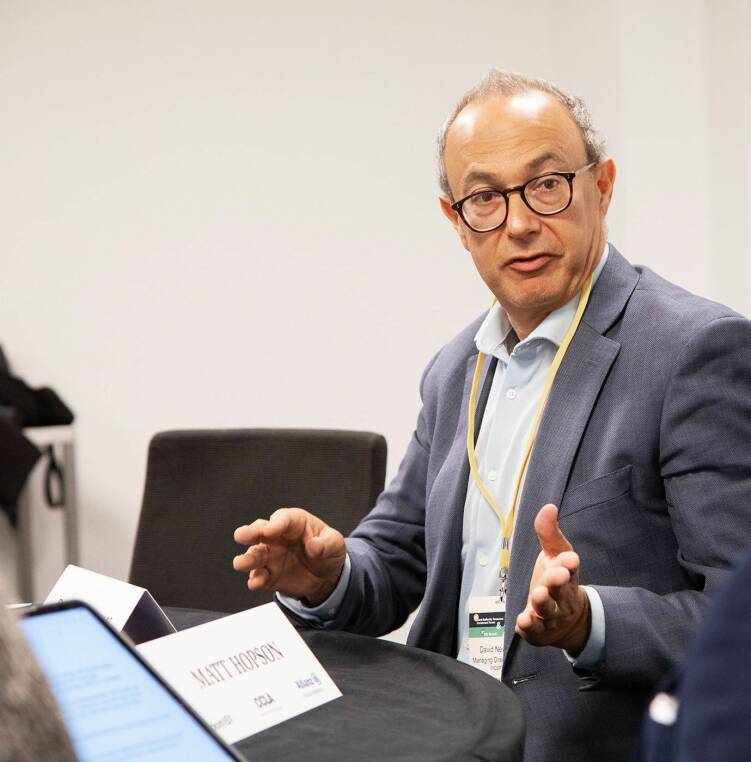
David Newman, managing director, fixed income, Allianz Global Investors: I look after multi asset credit funds, high yield corporates, and also trade finance. On duration, if you look at the credit curve you get far more yield for short duration than going longer duration. Capturing short duration yield makes sense rather than going longer duration.
People forget that when you go longer duration, you think you’re taking an interest rate risk, but you’re also taking a lot of credit risk. Right now, there’s a lot of uncertainty and mixed data.
Within the pensions world, the cash allocation is liquid and it wants daily liquidity. But do you need daily liquidity on everything? What we have seen with both pension funds and insurance companies in their treasury bucket is needing liquidity on 70-80% of their cash allocation yet keeping everything in money markets. That makes sense, but you can eke out yields in the same way you would in extending duration by taking on a little illiquidity.
Trade finance is one product that can serve local authorities, more on the pension rather than treasury side. The duration is about 70 days; you’re not taking any of that longer term credit risk or interest rate risk. The pickup is very attractive. We’re running cash plus about 180-190 basis points, giving you double B high yield spreads for 70-day maturity. Because it’s a private markets business, the correlations are low with regard to public markets.
Luke Webster: David, can you give a bit of perspective about how asset mixes might be changing in the pensions world?

Luke Webster: In the treasury context, what we’re trying to do is preserve capital in the first instance. We are now in quite a happy place in that respect. However, we have presided over a couple of years of colossal value erosion where at some points there’s been a 10% spread between what we’re achieving in our cash and what inflation is doing. The spending power of the reserves that we’ve been managing is substantially reduced. There’s quite a lot of catching up to do with support service delivery. So, more a question for the public sector delegates, has your council been interested in any changes to your investment strategy to potentially capture some opportunities to make good those losses of the past or have things remaining fairly unchanged?
Nemashe Sivayogan, head of treasury & pensions, London Borough of Merton: We always keep enough cash for any needs. We have mainly depended on the money markets for a long time even though they were not earning major interest. Now we are starting to look at different instruments. With security being the most important thing, these are most likely term deposits and we had some extra cash which for the first time we invested in bonds. The issue we have is that service inflation is high, even though cash flow is ok, and we can see there’s an increase on all the contract costs. The cashflow is going to increase.
Saying that, we are seeing some good interest rate income when we try to utilise extra days, whether it is in the money markets or fixed-term deposits.
In terms of the pension fund cash flow, we have a mature fund, so we pay more out in benefits than we receive in contributions.
We see that people are beginning to introduce the final 10-15% of their cash ladder into trade finance. You keep very similar duration to what you have. You’re eking out 180 basis points, which is a lot. The liquidity of the fund is monthly, so if you are in a pool or going larger, you can create a separate account just for yourself. Effectively after three months, you should be able to get repaid 100%. If you’re in a fund, it’s slightly lower than that depending on redemption rules. I think that’s an interesting way to complement what you’re doing in money markets.
“We’re trying to do valuation assumptions on the return that we’re getting right now and keeping it there, whilst that is being drawn down, as it reduces that volatility to future risk events.”
Matt Hopson, deputy director of finance – corporate,
London Borough of Islington
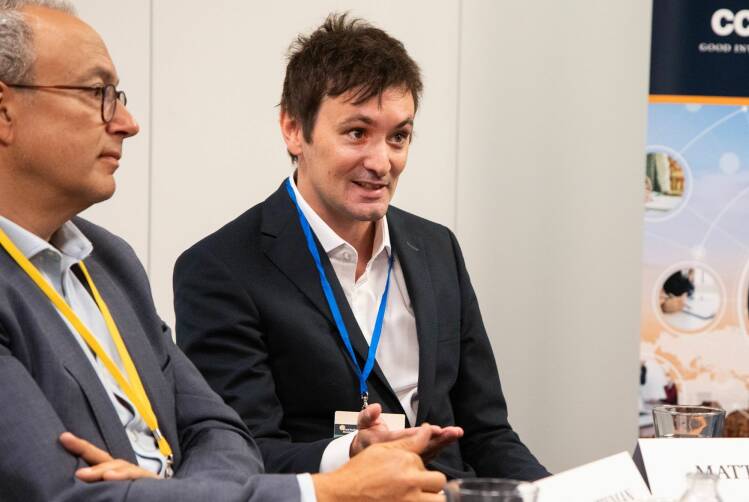
Matt Hopson, deputy director of finance – corporate, London Borough of Islington: With the pension fund, for the first time in a very long time we haven’t had that significant cash drag. Go back to 2017, and generally you wouldn’t maintain a cash allocation at all whereas now you can get some good risk adjusted returns over the next 12 months.
What we’ve done at Islington, which would have been unheard of maybe four years ago, is we’ve got a number of restructures required in our investment portfolio. We have private markets allocations building up and we have some asset sales that are needed to fund these various things that are going on. All the liquid securities that were being used to fund illiquid have just been sold and placed into cash instruments which deliver a perfectly reasonable level of return. We’re trying to do valuation assumptions on the return that we’re getting right now and keeping it there, whilst that is being drawn down, as it reduces that volatility to future risk events.
Luke Webster: What sort of cash instruments are you using?
Matt Hopson: Money market funds with good liquidity. We’re not trying to do anything clever. It’s quite a significant amount for us to hold, close to £70m, but it’s a relatively small fund.
On the treasury side, Islington’s cash has been significantly eroded over the years. We’re well under £100m in terms of treasury investments.
We’re looking at the investments to give us additional income. As part of that we have invested in a buy and maintain bond fund so it will give us some additional income but is not going to completely eliminate the net deficit.
Bola Tobun, treasury & pensions manager, London Borough of Harrow
“It’s time to review the strategy and see how we can have longer term. I usually put 20-30% of the investment portfolio longer term depending on capital expenditure of the council.”

Bola Tobun, treasury & pensions manager, London Borough of Harrow: For our pension fund, we have a dedicated portfolio to use to fund our illiquid assets. The investment outlook for performance for the year is low. The best option currently seems to be cash, and while we may not do that, we are considering the options of what to do because we’ve got over £70m in that portfolio and over 10% allocation to illiquid assets we need to fund over the next 2-3 years. We don’t want to put it in equity or something else. Hopefully now we can do something better with it.
What we’ve tended to do is take a surprising amount of duration. For a fund with relatively small cash for the size of the authority, we have taken more duration on a 6-18 month basis. You’re seeing incredible yields with secure partners, of over 6%. Maximising that is very important to us with such a small amount of cash, but we are in a good position where we haven't changed our cash receivable budgets significantly.
We’re not under pressure to gain extra returns but when we’re in these particularly challenging times and budgets, every bit helps. We have taken a bit of that liquidity risk, but not without careful consideration.
Luke Webster: Is that still in bank deposits or are you looking at other means?
Matt Hopson: Yes, still other local authority / bank deposits. Every week when the next authority has a s114 notice warning out, the question goes round, ‘are we invested in xyz?’. We have been hit with some names in the past but there is no risk to recovery in real terms. We can reassure members and senior officers that everything’s fine.
David Dickinson, investment fund manager, London Borough of Barking and Dagenham
“On the treasury side, we’ve had a lot of cash and we’re just running that down currently. There’s a lot of investments in the council.”

David Dickinson, investment fund manager, London Borough of Barking and Dagenham: Historically, we’ve tried to steer clear of cash and generally had a short-term borrowing position. But the pension increase has happened this year. We’re beginning to build up a bit of a cash position and it’s quite a good time to do it with interest rates being a bit higher.
On the pension fund side we’ve also not really had reallocation to fixed income and we’ve just done a rotation in the last month, from equities and other alternatives into asset bonds and credit. On the treasury side, we’ve had a lot of cash and we’re just running that down currently. There’s a lot of investments in the council. It’s been lovely to have all that cash and getting 5% or 6% but we’re running down the commitments on the investment side.
We started an investment programme about seven years ago, and we are still finishing off some of those. There isn’t much new investment coming out.
But you end up seeing significant capital losses on a 6-12 month cash like instrument, because rates have moved so quickly. Sometimes chasing that extra yield is a bit dangerous.
David Newman: The whole concept of money market funds being absolutely safe is a bit of a misunderstanding as well. A typical credit money markets fund would have maybe 40% exposure to banks so when a nation’s bank struggles there will be drawdowns.
The other thing is that they have about 40% peripheral risk. It can be good but it’s not stable.
Is trade finance any better? Well, it’s diversified and it's different. They’ve all got risks. I think the most important thing is to understand what the embedded risks are. If you’re trying to come up with various short duration strategies, looking at higher rates, you can just dig that little bit deeper and diversify across those risks.
Luke Webster: How have things changed with pensions treasury and investment at Barking and Dagenham?
Kelly Watson, head of local government relationships, CCLA Investment Management
“One thing that we are hearing from clients is that there has definitely been a shift to that more shorter-term cash allocating part of the portfolio.”
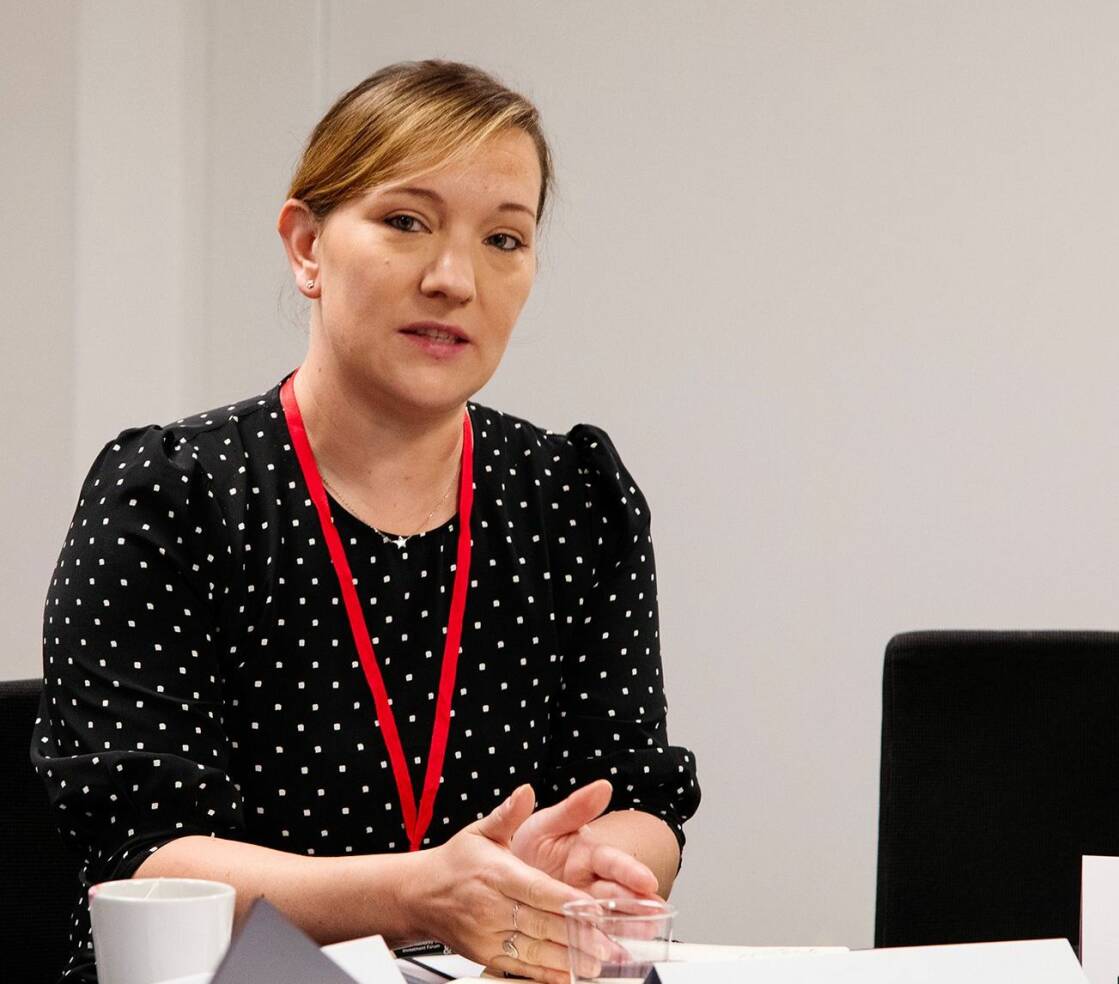
I think there is a lot of chasing the yield. In that 6-12 month period is where you can get the biggest pickup in yields. After that, the yield curve does shift down a little bit.
There is a search for that additional yield. Now that we’ve got this interest rate environment that we’re in, how long will it remain for? I think people are looking out into the extended short end – not quite the medium term.
Joe Jepson, director, UK institutional, Allianz Global Investors: We’ve seen a lot on the pension side. There’s been a lot of commitments to private markets over the past few years. Frustratingly, in many ways it’s taken quite a long time for these to be drawn down – 2-3 years. It’s a case of ‘where do we put the cash that will be used to draw down the private markets’. For multi asset credit there’s been some frustration in terms of performance. That’s where we've had more conversations and we’ve taken on some clients who are using trade finance as a diversified way of achieving some cash plus return. It’s also just about achieving diversification.
Luke Webster: To those of you involved in looking after local authorities, are you seeing any shifts in client behaviour on either the pensions or treasury side?
Kelly Watson, head of local government relationships, CCLA Investment Management: One thing that we are hearing from clients is that there has been a shift to that more shorter-term cash allocating part of the portfolio. There has been a bit of a shift to fixed term deposits, not necessarily in the overnight markets but shifting out to maybe 3, 6, 9 months. The shift in asset behaviour is in the short end of the market, and a little bit of cash plus.
“We’ve taken on some clients who are using trade finance as a diversified way of achieving some cash plus return. It’s also just about achieving diversification.”
Joe Jepson, director, UK institutional,
Allianz Global Investors
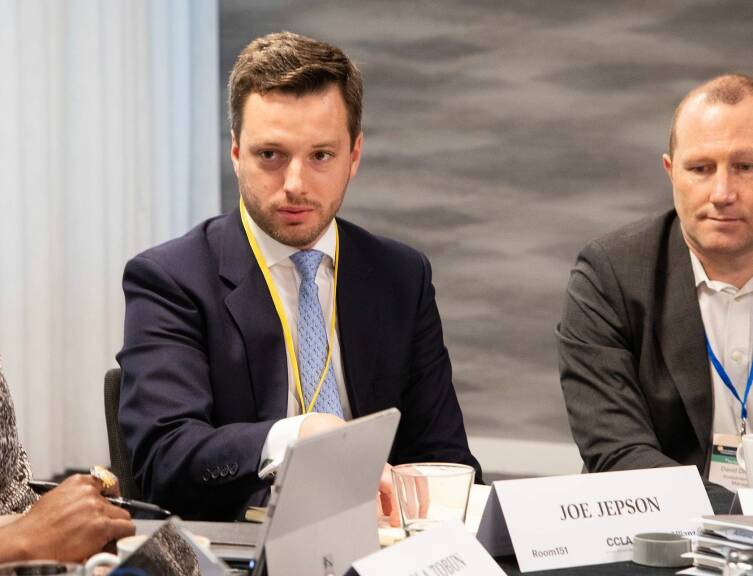
Matt Hopson: I’m interested in colleagues’ views on long dated treasury government as an option, a very small part of the portfolio. Westminster did make a five-year gilt purchase in 2014. That was yielding around 2.5% and that was a massive amount of return for what you could get at the time and now you’re seeing significant returns for that compared to what you were getting five years ago. Has anybody looked into this?
Nemashe Sivayogan: We have invested in this. There is extra one-off cash and we want to secure that for a long period. We could trade it in the short term and get something like 5.5% or 6%, but we don’t know for how long that will be. We get something stable for x number of years and we will get the bond yield coming for the annual budget. This is not the normal operating cash because it’s an additional cash, so we can lock it for a long and stable return. This was only invested a couple of months ago so I haven’t come to the reporting part yet. But we will hold it till maturity – that is the intention.
Luke Webster: Something we want to do as a sector is to get people used to discussions on maturity. We have a volatility value at risk limit for the fund; it’s very small at 2% so it’s seriously low risk in aggregate but the point is that is inoculates people to that discussion. They’re used to seeing small market to market movements and we can always come back with the narrative that we’re holding to maturity, and so there isn’t going to be a real loss. It’s very small and we hold a reserve against it as well so that there’s no impact on the general fund. I think getting people used to that discussion is key to unlocking more interesting opportunities.
Kelly Watson: I completely agree with you that education is needed.
Where we’re taking duration now it’s more in the private credit space, and I think illiquidity premium is coming back as a kind of reward. I probably would shy away from doing gilts right now, but you might want to revisit that in a few months.
Peter Findlay, Founder, Room151: Are these fundamentally distinct conversations? You manage the treasury, you manage the pension, and there’s not a lot in common with the two. Or is there an advantage to being across both pots of capital? Can you do things across the two?
Luke Webster: I think we miss a trick in local government in this regard. This isn’t a corporate trust structure. The pension fund is just a revenue reserve of the authority that has special investment powers applied to it which are broader than the authority’s general investment powers. We could think about things in a more integrated fashion and it always strikes me how unintegrated the approach is generally.
Bola Tobun: The experience and the knowledge is useful. You can make use of the experience and knowledge you are getting from your advisor from treasury to challenge the investment consultant from pensions, and vice versa. Whereas if you don’t manage both pensions and treasury cash, the capital team will just be dependent on the treasury advisor, and whatever it is they are saying.
Meanwhile, because you are exposed to more investment knowledge through the pensions, it will give you the confidence to challenge some of the things investment consultants say to you for your pensions because you are in that market as well.

Luke Webster: Coming back to the question of whether now is a good time to do that, I think if you’re happy with the credit, and you’re convinced you can hold it to maturity and you like the level of income, and you want the budgetary certainty, why not?
I think now is a very interesting time for thinking about strategy because with the shape of the yield curve at the moment, you’re quite well rewarded for parking things in the medium term, which gives you space to think.
On a market to market basis with conventional government or long dated corporate bonds there probably is quite a lot of risk going further out because you can see the yield curve – whatever happens, whether it goes up or down – it will correct at some point to a normal shape. You’re going to experience more losses at the longer end, if it goes the wrong way.
Nemashe Sivayogan: My fund is completely different. The decision making is separate for the pension fund, pension fund committee and the general fund and, after them, the treasury side and capital. We as officers use the knowledge that we can to influence things but so far we haven't considered whether we can amalgamate two funds or make one decision for both pots of money.
“We as officers use the knowledge that we can to influence things but so far we haven't considered whether we can amalgamate two funds or make one decision for both pots of money.”
Nemashe Sivayogan, head of treasury & pensions, London Borough of Merton
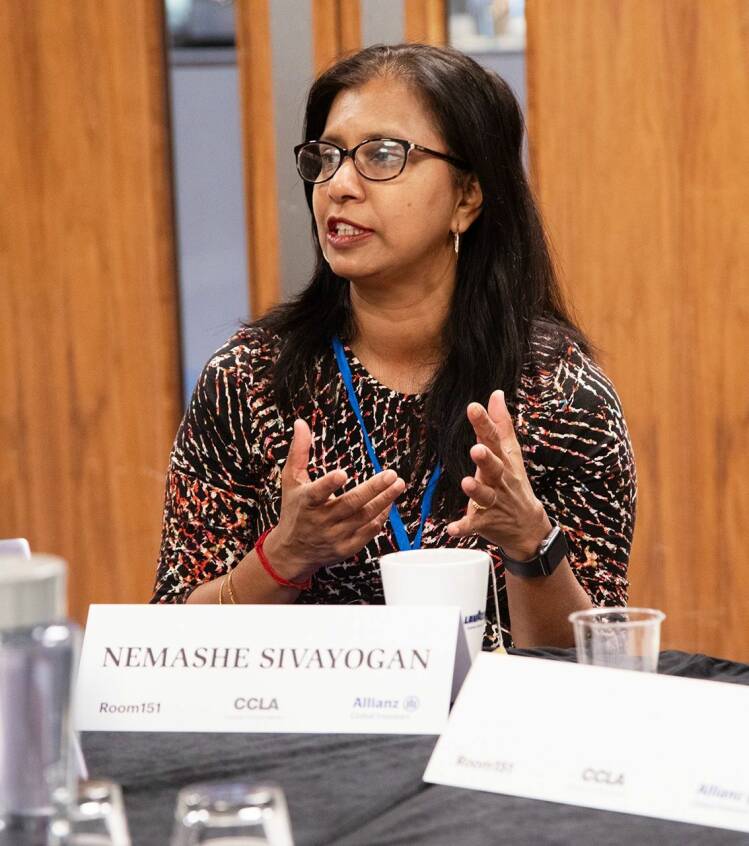
Matt Hopson: At Westminster we had treasury and pensions investments together in the investment strategy, but there’s no overlap because the investments that you could make in treasury were so inferior to the options you had in pensions at the time. Although you were always looking with the same lens, there’s not much overlap. That’s not necessarily the same case now. There’s the same skills, using the same consultants to manage all economies of scale, the same property managers and same insurance process, one investment fund with the relative shares accordingly, so I definitely could see more scope for this now than there has ever been in my career.
David Dickinson: There’s that knowledge and the ability to discuss some of the council’s investments with the fund managers, which is very useful. They can provide a different view on things in the market.
Luke Webster: I think that there’s a risk of taking that separation to extremes and operating silos of thinking, and it’s not clear what that achieves, and this can be a bit of an own goal. I think a lot of the issues arise from the fact that pension funds receive advice from people in the main who advise corporate pension funds where the structure is very different. That is a legally separate trust.
Luke Webster, chief investment officer, Greater London Authority
“The stakeholder in local authority is the taxpayer. They’re the people who are bearing all the risk and it’s the same risk if things go wrong in treasury or if things go wrong in the pension fund.”
There’s in some way a kind of adversarial relationship between the fund and its sponsor. That’s just not the case in local authority. The stakeholder in local authority is the taxpayer. They’re the people who are bearing all the risk and it’s the same risk if things go wrong in treasury or if things go wrong in the pension fund. It’s not the pensioners who lose out, it’s the council taxpayers.

Trade finance simplistically is a short-term line of credit from a third-party financier that helps companies fund the buying and selling of goods. The primary risk is credit, although there are some specific trade related risks that also need to be understood.
Trade finance covers a wide range of risk profiles with target returns over cash ranging from +50bp to +1000bp. Given the low risk tolerance of treasury managers, return targets below +200bp are likely to be the most appropriate.
A well-structured trade finance fund should be broadly diversified to mitigate credit, sector, and geographical risks. Typically, one would see an average maturity of assets between 60 and 90 days.
Trade finance’s ultra-short-term maturities allow for any underperforming positions to be swiftly replaced at maturity with more promising investments. Unlike in bond markets, those assets do not have to be sold at a lower rate if the market value has dropped. Instead, they expire at par – or face value – meaning the portfolio rebalancing does not lead to trading losses.
This broad diversification and short duration should create a low volatility investment.
As trade finance instruments are private and have a complexity premium, they could provide a greater return than seen in the public markets for the same credit with a similar tenor. This premium also contributes to reduced correlations with credit markets.
Less exposure to risks
Money market funds are the natural home for cash investments. However, to get any returns, typically these funds take on risks that may not be evident. Many credit focused funds have high exposure to the banking sector or peripheral Europe that can provide greater than expected volatility. A trade finance fund reflects the dynamics of global trade and is far less exposed to these risks.
Furthermore, with a global market to chose from, credit exposures can be altered reasonably quickly.
Superior returns, and low market correlations do have a cost; namely liquidity. Trade finance funds typically have weekly or monthly redemptions with some limits on absolute amounts returned.
However, for treasury portfolios where cash is not needed daily, the boosting of an efficient frontier can be compelling. For example, trade finance is a useful tool for meeting capital calls for private markets or meeting known future payouts for salaries, building contracts, etc.
While funds do have redemption hurdles, if advanced notice is given of liquidity needs, a fund manager should be able to create the required liquidity due to the short-term nature of investments. Larger investors can also have a segregated account where liquidity is usually higher than that offered in fund format.
The growing institutional trade finance asset class provides an interesting opportunity for treasurers seeking a medium-term cash position within a liquidity ladder that could offer superior returns to money market funds, reports Allianz Global Investors


CCLA’s Kelly Watson shows how the investment company’s Public Sector Deposit Fund can meet the unique needs and expectations of public sector organisations
[i] Using Fitch Ratings methodology. Ratings are subject to change.
• Ready to explore the benefits of the Public Sector Deposit Fund? Please contact Kelly Watson, head of local government relationships at CCLA, on kelly.watson@ccla.co.uk or 0207 489 6105.
For local authority treasury and pension managers, consistent income and sustainability matter more than ever before. In a world where costs are rising, banks are failing, and ESG is taking front-and-centre of many conversations, it is important to work with an asset manager that understands these challenges.
CCLA’s Public Sector Deposit Fund (PSDF), is a [i]AAAmmf UK qualifying money market fund that has been crafted to meet, in particular, the unique needs and expectations of public sector organisations. From embedding the security, liquidity, and yield (SLY) framework as a cornerstone in our strategy, to operating with a dedicated in-house sustainability team that vets and continuously monitors our counterparty’s ESG risks, to offering transparency to our clients.
The PSDF has been designed for the sector. It operates as a UK-domiciled, low volatility net asset value (LVNAV) money market fund and maintains strict accordance with the UK money market fund regulations.
The fund benefits from the guidance and oversight of a diverse independent advisory board consisting of experienced councillors, members of local government associations, local government advisors, and investment professionals. All are focused on providing valuable insights, enhancing governance, and most importantly, making sure the fund stays rooted to low-risk public sector needs.
At CCLA, we understand that the demands on councils are changing, and with that so are their cashflow needs. That’s why the PSDF offers instant access in the form of daily dealing, giving our clients the flexibility and liquidity to manage their individual circumstances.
As at 12 October 2023, the PSDF was yielding 5.33% AEY. For the latest yields, visit ccla.co.uk.
